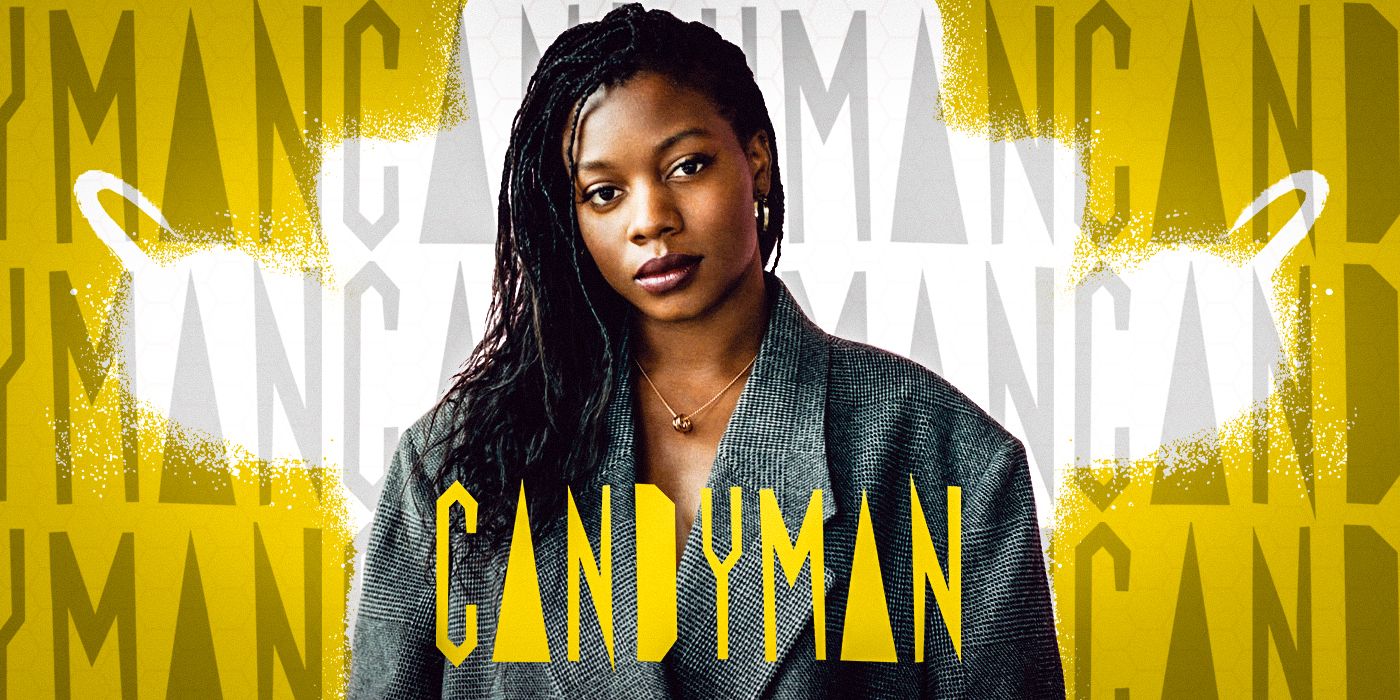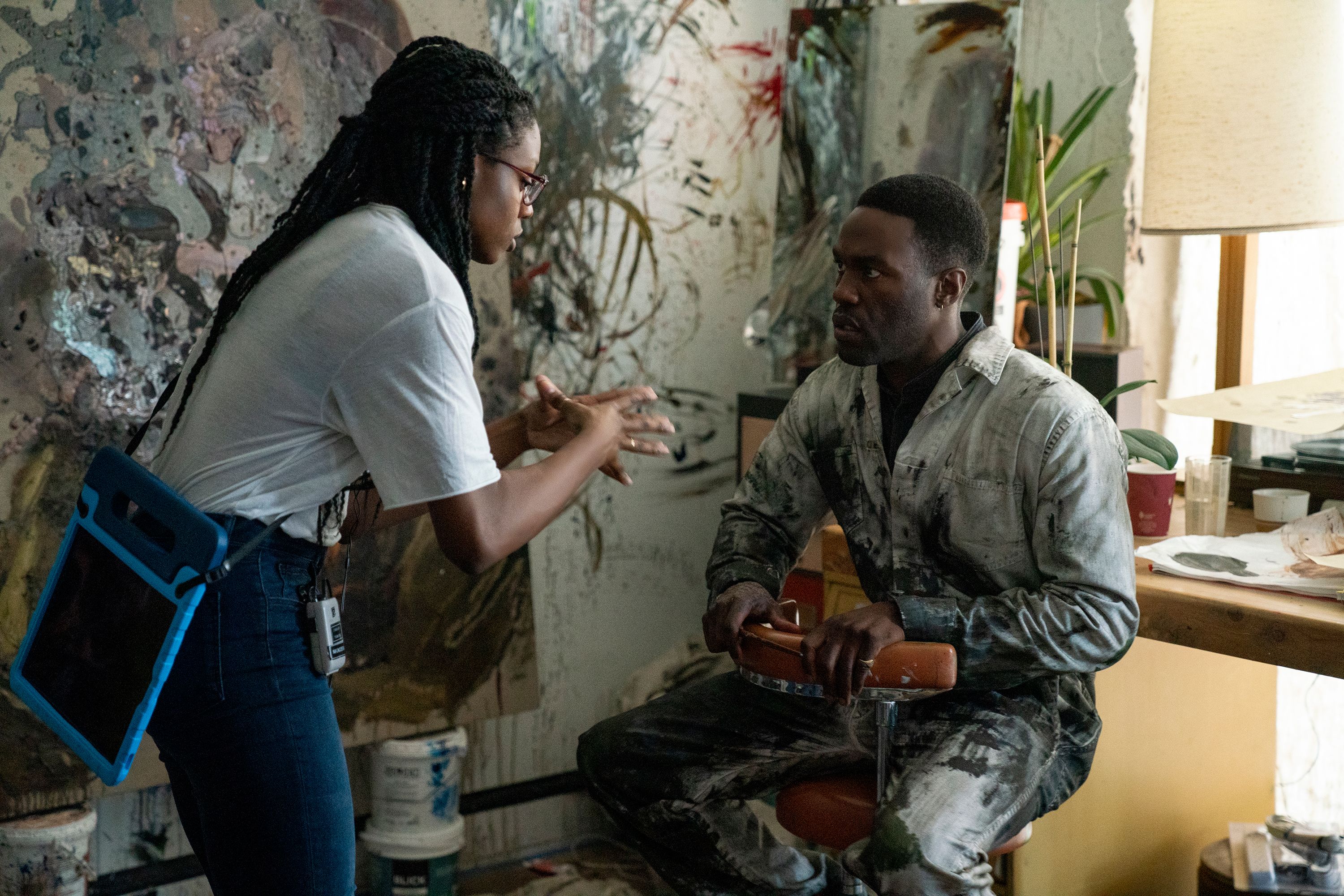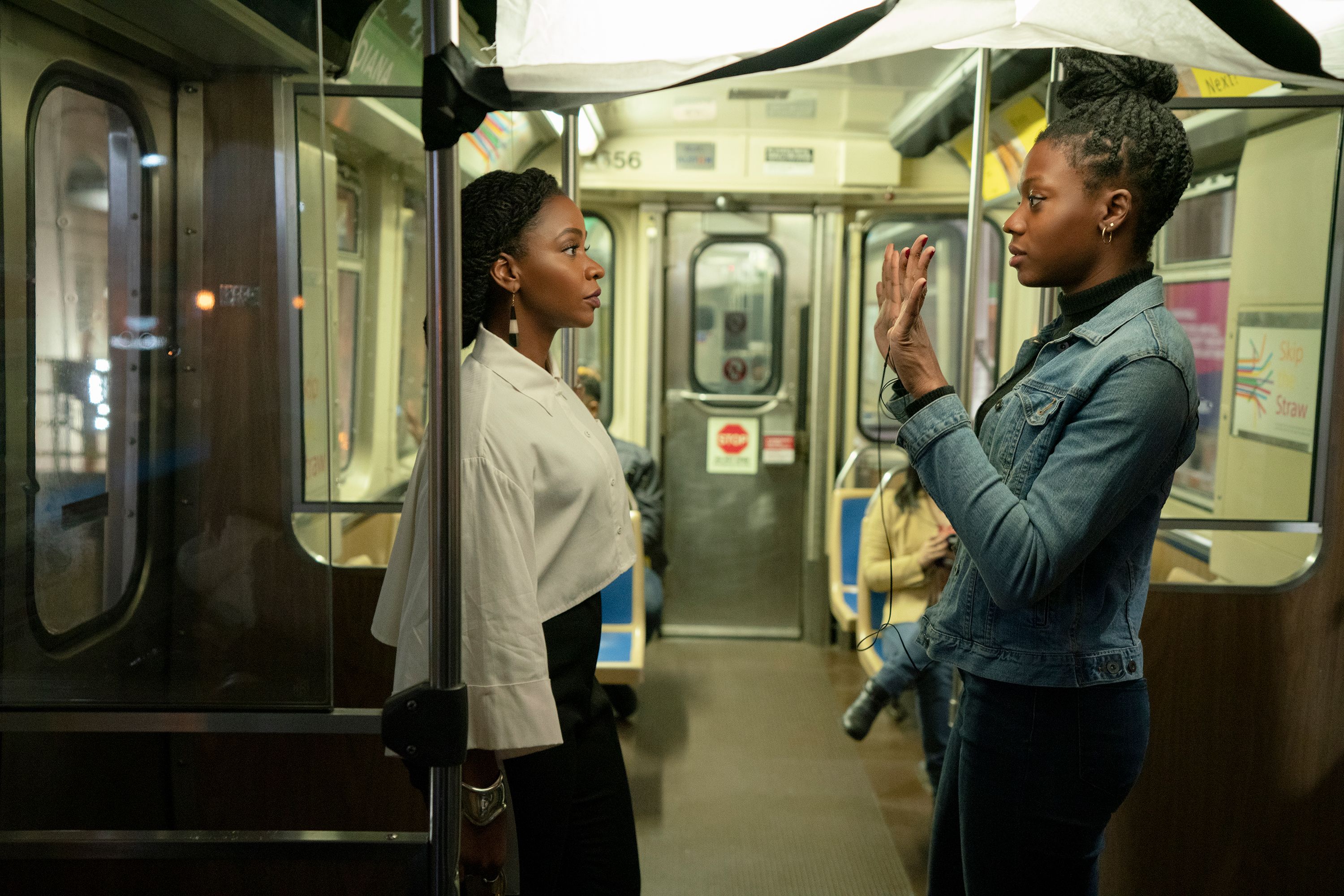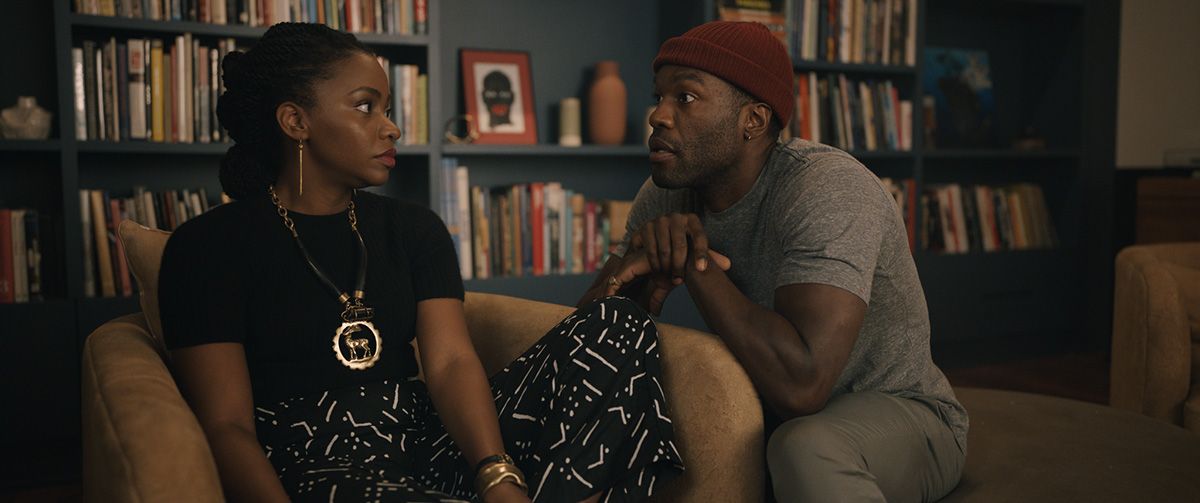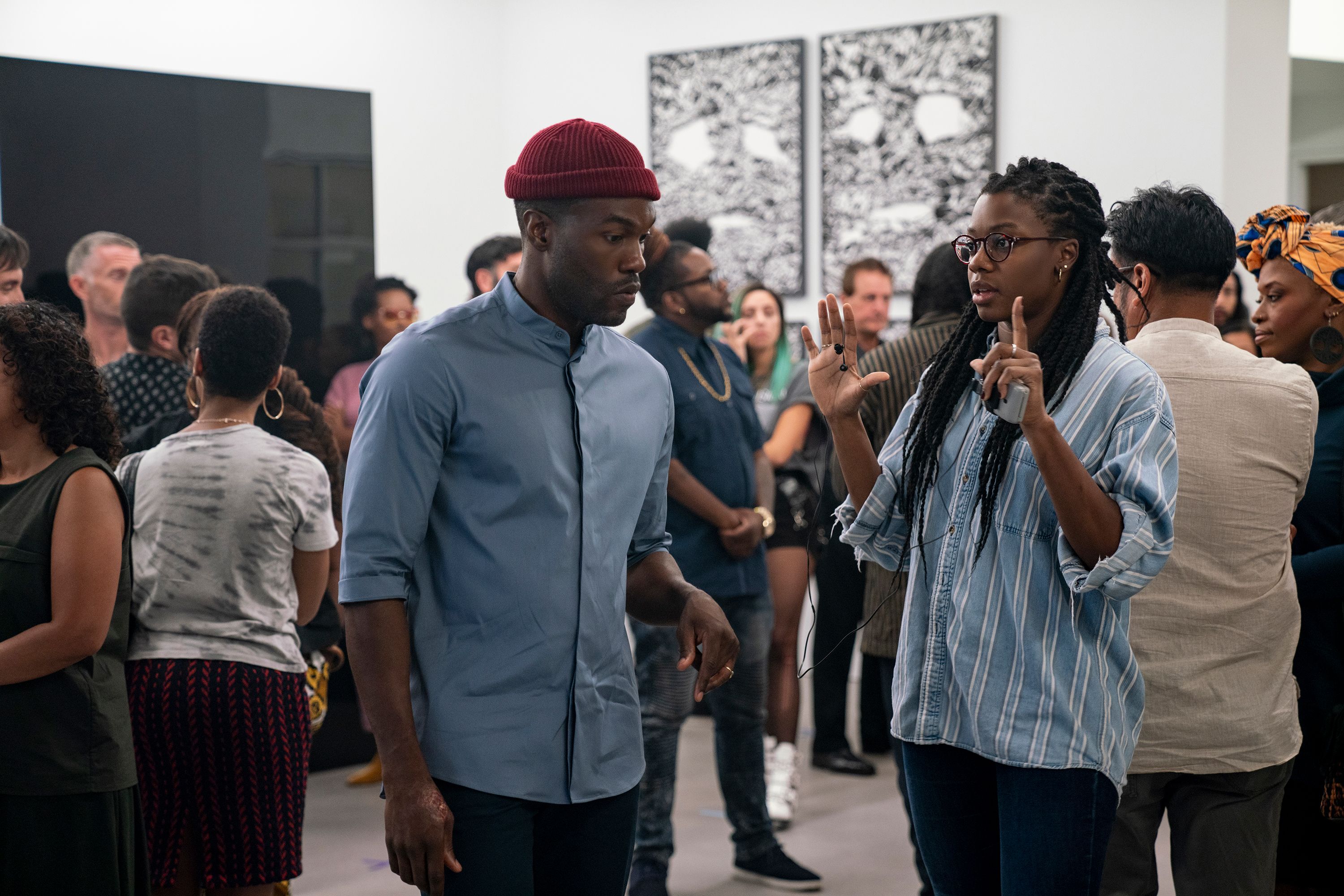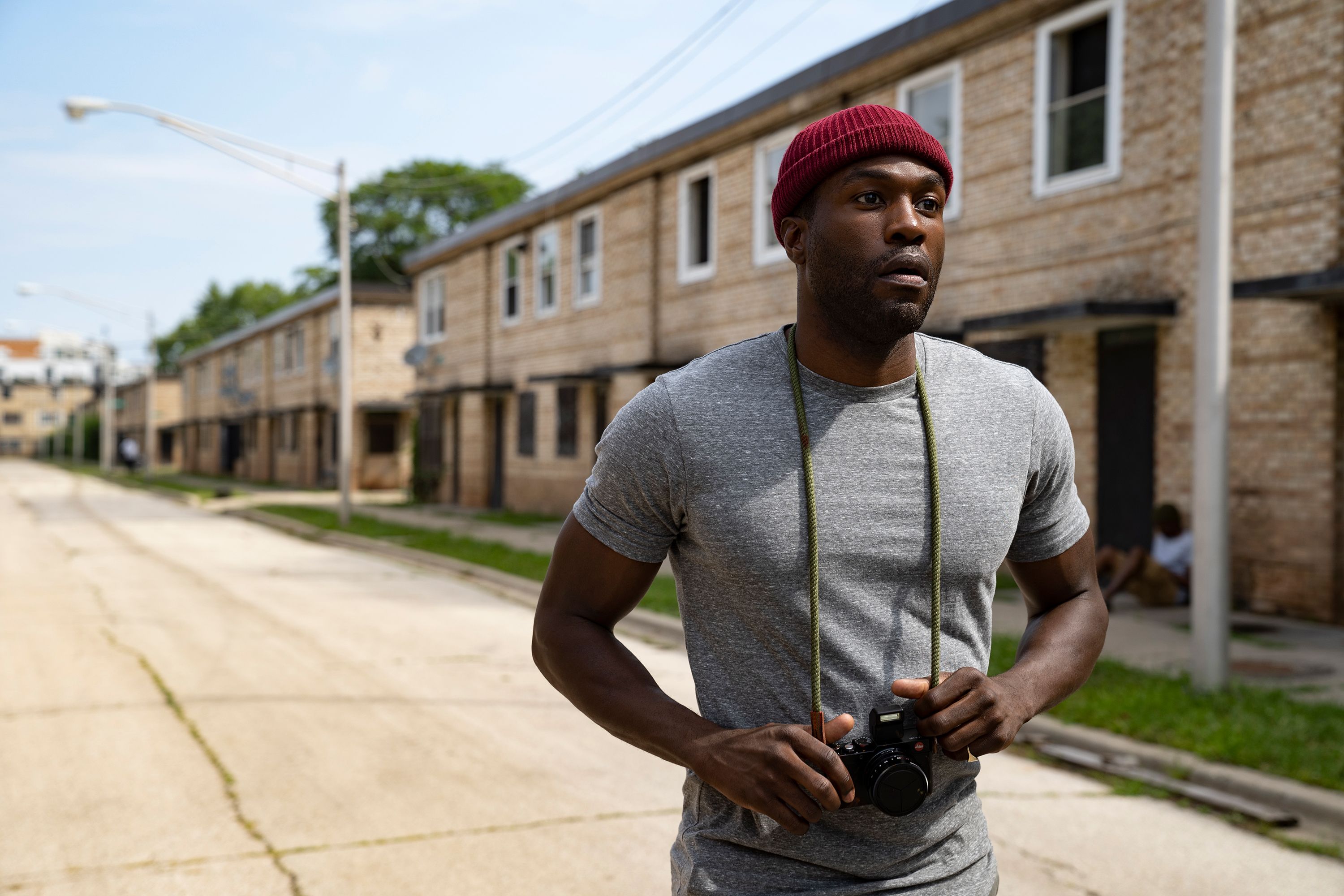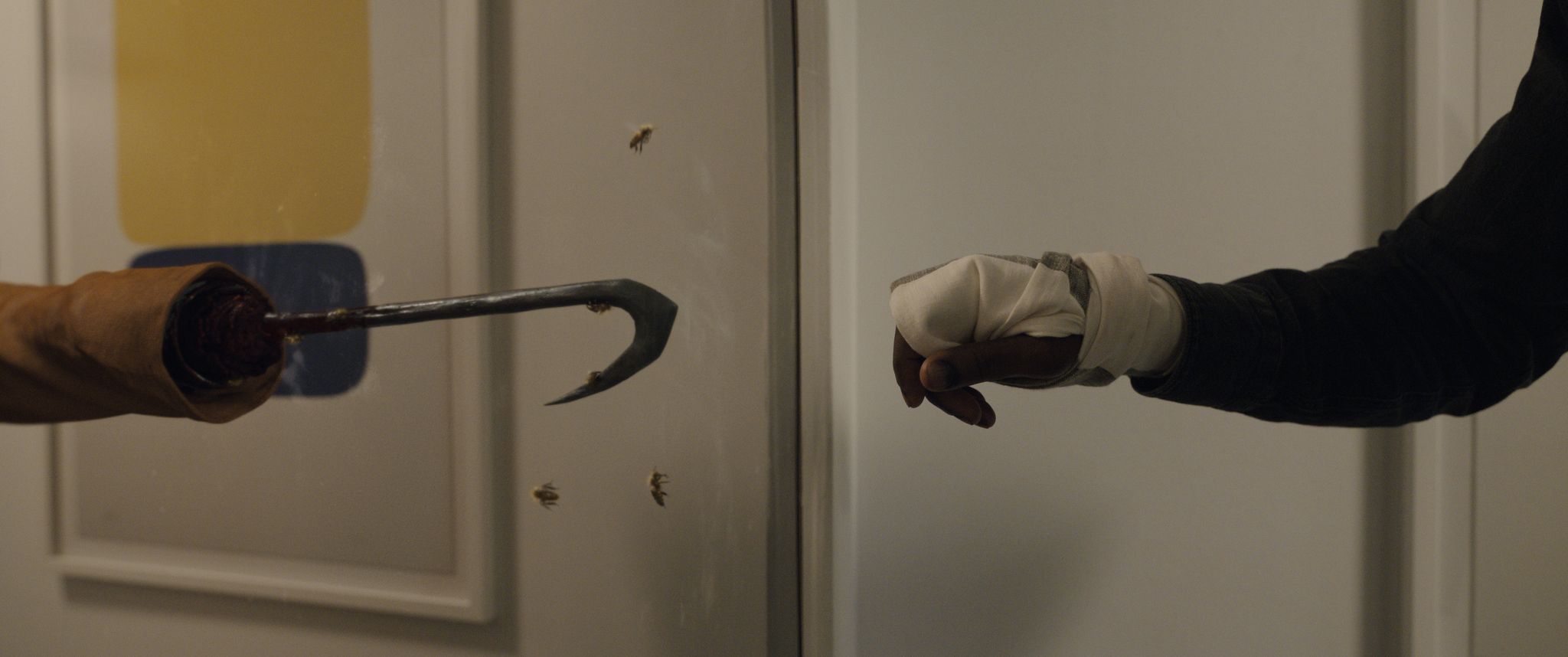From filmmaker Nia DaCosta and considered a “spiritual sequel” to the 1992 original, the horror flick Candyman follows Anthony McCoy (Yahya Abdul-Mateen II), a visual artist struggling to have a breakthrough in his work until he finds inspiration in the horrifying legend of the supernatural killer with a hook for a hand. While his partner, gallery director Brianna Cartwright (Teyonah Parris), tries to understand why his sanity seems to be unraveling, gruesomely violent events begin to happen that lead Anthony to question whether the myth is real.
During a global press conference with members of the media, writer/director DaCosta talked about why she wanted to take on this film, revisiting the original, the themes she wanted to explore, the creepiest moment on set, how the shadow puppetry came about, assembling the cast, the use of mirrors, whether she considers Candyman to be a monster, and if she’s ever said his name five times in front of a mirror.
Question: What drew you to doing a remake of this film, after all of these years, and how did you and Jordan Peele collaborate on this?
NIA DaCOSTA: I heard about Jordan Peele wanting to do a Candyman movie from my agent. I’m a huge fan of his and I love Candyman, the original film, and I just wanted to be involved. Thankfully, after my pitch, and me and Jordan and Win [Rosenfeld] and Ian [Cooper] realizing we all were aligned with what we wanted to do with the story, it all worked out. The collaboration was really great. I had Ian, who is one of Jordan’s really great friends and a producing partner, who produced Us, by my side, every step of the way. He’s brilliant and such a creative force. And then, Jordan was wonderful. He was a real resource to me, but also, I learned so much from him, just watching him. He’s brilliant. He really helped make the movie better, every step of the way.
Did you feel any pressure in taking on such an iconic property, and did you revisit the original when prepping?
DaCOSTA: I definitely revisited the original when prepping because I love it as well. I watched it with friends. That’s how I rewatched it most of the time because I was really interested to see how people would react to it now. It’s very different from what we remember. It’s a very strange, idiosyncratic film. It’s really special, in that regard. In terms of pressure, I didn’t feel any, at first. I was just like, “Okay, cool, I’m gonna make a movie with Jordan Peele. This is so fun. I love Candyman.” And then, of course, there’s the studio, the canon of Jordan Peele, and that whole thing. People on the internet really care about this character. I was like, “Oh, I forgot about all that stuff.” But you have to push it out and just do what you can from, from your point of view. For me, as a fan, I just did what I would do as a fan of the story.
There are so many elements, social commentaries, and horror subgenres explored in this new film. What was the key element in cracking the story and building that while balancing all of the different elements?
DaCOSTA: We wanted to be as specific as possible. For me, the film is really about how storytelling is used around these horrific events, to either help process or to campaign or to create a martyr out of people who ended up leaving us too soon through these terrible acts of racial violence. That sounds specific, but it also has so many facets to it – how does storytelling operate in our culture and how does storytelling operate, to the point of getting us a character like Candyman? And then, of course, he’s real and he does kill people, so there’s also that element of it, that you have to balance with the real world themes that we’re talking about. For me, it was just that I really care a lot about those things and I care about portraying them in the right way. I’m also a huge fan of the original Candyman. It was really just about coming to it from a fan point of view, and also as someone who really cared, and also as a part of the community that these things deeply affect.
As a fan of the original Candyman, what did you want to keep and what did you want to add that was new?
DaCOSTA: I was a huge fan of the original film, but I didn’t watch the sequels until I was much older, and I didn’t watch them that much, if I’m being perfectly honest. What I wanted to keep was the romantic nature of Candyman. There’s something really interesting about that, that they did in the first film. I really loved the way he was this darkly romantic, Gothic, anti-hero character, so I really wanted to keep those layers to him. It was also important to expand on who he was and what that meant.
You’ve worked in the genre before. Are you a longtime fan of the supernatural and horror?
DaCOSTA: I love horror and horror films. I’m a longtime fan, and I was so excited that I got to make one.
Did anything weird or creepy happen on the set, while you were making such a scary movie?
DaCOSTA: For sure, yeah. When I was in L.A. with my line producer and the pre-production house, we heard this sound and looked outside. All of the windows were open and we just saw this huge swarm of bees that felt like it appeared out of nowhere. It was huge, and I’d never seen a swarm of bees that big before. We were rushing around, closing all the windows and freaking out. And then, we just looked at each other and we were like, “That was fucking creepy.” After that, we just kept finding dead bees all around the house. It was very strange.
Have you ever said Candyman fives times in front of a mirror?
DaCOSTA: No, never. And I never will.
Virginia Madison’s character, Helen Lyle, from the original is mentioned prominently throughout this film, but we only see her image once and in old newspaper reports. What led to that?
DaCOSTA: We definitely were thinking about what role Helen would play in the film. At the end of the day, we thought the first one was Helen’s movie. I love what Virginia Madsen does, and I love Virginia Madsen. But this movie is really about Anthony McCoy and about Candyman, so we wanted to make sure we gave the screen time to that.
The shadow puppetry used to tell the story of Helen Lyle is a haunting storytelling method. What inspired you to go with that creative form of storytelling, as opposed to a more traditional flashback scene?
DaCOSTA: Early on, Jordan and I were talking about how much we would hate to do a traditional flashback scene or to use footage from the original film because we just wanted this movie to stand on its own and be in its own world. Early on, he mentioned shadow puppetry. And then, in Chicago, we developed a look with Manual Cinema, this amazing production company. From there, it became less about flashbacks and more about how we depict people telling these stories, how we depict these legends, and also how we depict these moments of violence throughout history.
What made you decide to use Cabrini-Green as a location for the modern update, since the housing project was torn down in 2011? Was focusing on gentrification a part of the story, from the beginning?
DaCOSTA: It was a part of it a bit, but the key thing for us was that you have to go back to the scene of the crime, as it were. We wanted to connect it to the land, to the place, because the story of Sabrina green is an over, um, cause now it a story about a community that’s been kind of disappeared from that location. And we want to talk about what was left behind. So gentrification has ended up having to be a part of the story in a bigger way.
Did you have specific actors in mind when you were developing the movie? How was the casting process for you?
DaCOSTA: When I pitched the movie, I went in and in my deck was that Teyonah Parris should play Brianna. That was that. In the meeting they were like, “Oh, we love her. We like really wanna work with her.” It was great to have that support already for that. It was like, “Okay, cool, we have the same taste.” And then, Yahya [Abdul-Mateen II] and Jordan had worked together already, so that’s how he came onto my radar, even though I had known him and really thought he was super talented. Colman Domingo, we all love. Nathan Stewart-Jarrett, I also knew. I was literally reading the script, and seeing the new drafts come in, I was like, “Okay, I know who everyone is.” Thankfully, they all said yes.
The chemistry between Yahya Abdul-Mateen II and Teyonah Parris is so important to the story and so key to all of this.
DaCOSTA: A hundred percent. They really just got into the characters and, at one of our first rehearsals, were just talking about their history and it was really fun. I could see the dynamic growing between them. They’re just great actors. They cared about the story and they cared about what the relationship meant within the story, so they really give their all to it.
Can you talk about the importance of the production design?
DaCOSTA: Cara Brower, who is brilliant, was the production designer on this film and is also on the film I’m doing now, The Marvels. She and I had such an amazing time collaborating on it because she’s really smart and we have similar taste. She can really elevate something. She took all of my references and she brought her own things to the table. We knew we wanted to work in reflections. We wanted to work with darkness and light, and what you see and what you don’t. We wanted to exploit real locations. We shot in places that really existed. We didn’t shoot on stages too much. Even when we built a gallery, we built that in the neighborhood where the gallery would have been. We went to what I call the Honeycomb Buildings in Chicago to shoot there because they’re amazing. We did a lot to really make it feel as real as possible. If you’re from Chicago, you’ll be like, “Yep, that makes sense.” It was about the themes and the visuals, but also about making something that felt authentic and real.
You use mirrors in building tension throughout Candyman. What challenges were involved in filming those moments?
DaCOSTA: Mirrors are so hard, especially when there’s someone, not just outside of the mirror, but in the mirror. How do we shoot this? What are the places to shoot from? It’s very hard, from a technical point of view. And then, from an artistic point of view, I knew that’s how I really wanted to build dread. There are a lot of zoom shots into mirrors and out of mirrors in the movie. For me, it was scary and I was like, “I really hope the audience has the patience for this experience.
The violent content in this is more suggestive than outright gory. Was that a deliberate choice?
DaCOSTA: It was a balancing act, for sure. I love gore, but it has to have its place. Body horror is really important, and I knew that most of the gore and body horror would actually happen to characters we care about, as opposed to just throw away slasher stuff. But we also wanted those slasher moments to be visceral and for you to feel them. That doesn’t mean that you see a close-up of someone being disemboweled. It can be sitting outside of an apartment and pulling away as the terror happens. We thought about that a lot.
As much as it’s a horror story, that film feels like a love letter to Black men. How have your experiences as a Black woman informed the way you see Candyman, and how did your experiences affect how you wrote Brianna and her perspective on the story?
DaCOSTA: Oh, goodness. I’ll talk specifically about Brianna. Something that people talk about a lot in the Black community is how Black women hold it up, basically, and Black women don’t get to really process and work through their trauma because they’re too busy dealing with everyone else. That’s what I wanted to talk about with Brianna. Her partner is having a really hard time, but she has her own trauma, that we see in the film, that she has never really dealt with. The closer this legend of Candyman gets, the more it keeps coming up and haunting her, the way that Candyman haunts Cabrini-Green. That’s something I really wanted to talk about because I see it and I have experienced it myself. I thought that was a really important part of the love story.
Do you consider Candyman a monster? What does he represent to you?
DaCOSTA: I think Candyman is definitely a monster, for sure. In ways, he can also be an anti-hero. He’s multifaceted. For me, he represents how we change people from people into idols or martyrs or icons or representations of a thing, as opposed to living, breathing human beings. He’s definitely a monster. It’s a horror movie. He’s definitely a villain, of a sort. But we wanted to deconstruct who decided he was a monster, who gave him that name, and how he got there in the first place.
What should audiences expect from Candyman?
DaCOSTA: The unexpected.
Candyman is in theaters on August 27th.

